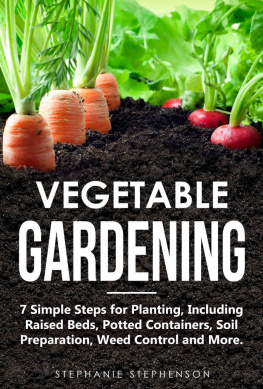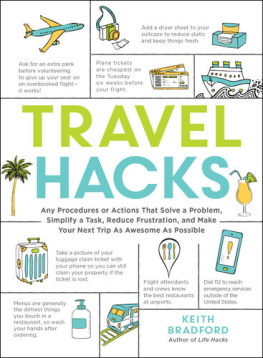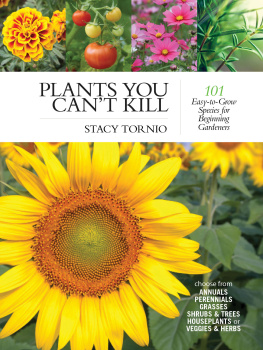THE DIRT CHEAP GREEN THUMB THE DIRT CHEAP GREEN THUMB 400 THRIFTY TIPS FOR SAVING MONEY, TIME, AND RESOURCES AS YOU GARDEN RHONDA MASSINGHAM HART 
The mission of Storey Publishing is to serve our customers by
publishing practical information that encourages
personal independence in harmony with the environment. Edited by Gwen Steege and Lisa H. Hiley Art direction and book design by Dan O. Williams How-to illustrations by Brigita Fuhrmann, except for pages 42, 68, 112, 113, 117, 170 (2nd from top), 190, 225, 251 by Alison Kolesar, and 196 and 214 by Elayne Sears Decorative illustrations and typography by Dan O. Williams Expert read by Anne Halpin White Indexed by Nancy D. Wood 2009 by Rhonda Hart *The Dirt-Cheap Green Thumb is a revised and expanded edition of Dirt-Cheap Gardening, Storey Communications, 1994 All rights reserved. No part of this book may be reproduced without written permission from the publisher, except by a reviewer who may quote brief passages or reproduce illustrations in a review with appropriate credits; nor may any part of this book be reproduced, stored in a retrieval system, or transmitted in any form or by any means electronic, mechanical, photocopying, recording, or other without written permission from the publisher. The information in this book is true and complete to the best of our knowledge. All recommendations are made without guarantee on the part of the author or Storey Publishing. The author and publisher disclaim any liability in connection with the use of this information. Storey books are available for special premium and promotional uses and for customized editions. For further information, please call 1-800-793-9396. Storey Publishing
210 MASS MoCA Way
North Adams, MA 01247
www.storey.com Printed in the United States by Versa Press
10 9 8 7 6 5 4 3 2 1 Library of Congress Cataloging-in-Publication Data Massingham, Rhonda, 1959
The dirt-cheap green thumb / Rhonda Massingham Hart. [2nd ed.]
p. cm.
First ed. published as: Dirt cheap gardening.
Includes index.
ISBN 978-1-60342-441-7 (pbk.: alk. paper) 1. Gardening.
I. Title. II. Title: Dirt cheap green thumb.
SB453.M375 2009
635dc22 2009023716 To my father, Richard Massingham,
With love and gratitude.
Thanks, Dad. Acknowledgments In large part, the first edition of this book was made possible by the Washington State University, Spokane County Extension Master Gardeners Program. Thanks also to Nancy Cashon, Scott McLaughlin, and Chris Culbertson for their help in pulling together the first edition. Special thanks for the kind and always welcome suggestions of Gwen Steege at Storey, without whom there would have been no second edition. Thanks seem insufficient for the tireless and cheerful contributions of my editor, Lisa Hiley, and copy editor, Eileen Clawson, who helped transform my jumble of words into actual sentences, and to the designer, Dan Williams, who made it all come to life, but thank you! And finally, thanks to fellow gardener, writer, and penny-pincher, Mark McKinnon, for the inspiration to stay on track. Heres to dirty fingernails! Contents Introduction The Dirt on Cheap Gardening Ive always been a little confused by references to lazy gardeners, because I dont know any. Gardeners seem compelled to work. Those green thumbs make our hands restless. These days, especially, there is another common thread among gardeners the desire to save money. Whether its growing your own food or simply mowing your own lawn, there are lots of ways getting down and dirty will save you money. Not to mention, make you healthier. The Dirt-Cheap Green Thumb is for frugal people, whether youre a well-established gardener or a beginner. Filled with hundreds of tips on everything from acquiring seed and plants to harvesting your crops, the aim of this book is to help you cut costs. Some of the savings are minor. For instance, seed is still a bargain compared to other garden expenses. Some savings are major, such as tips on saving hundreds, if not thousands, of dollars on equipment. But they all add up, and most carry benefits above and beyond the dollar savings. Many of the tips also are time-saving ideas. Even though I am cheap, or frugal, I know that nothing is more valuable than your time. And dont think for a minute that an inexpensive garden has to look cheap. All it takes is a little time, energy, and creativity without a lot of money to have a garden others will envy. 
CHAPTER 1
THE ABSOLUTES What elements do you really need to start a garden? The simple requirements are soil, sun, water, and seed. But what about location of the soil, the type of soil, and its structure and content? How much sun is enough, and can you enhance exposure? How much water is necessary, and how will you deliver it? How will you choose the right seeds? Do you even want seeds, or should you buy transplants instead? Like I said, its simple! The Perfect Garden Lets begin with the first choice every budding gardener must make: the site of the garden. Whether you are landscaping a small city plot or planting a large country garden, you must take stock of your site first. Imagine what youd do if you could choose the perfect garden site. It would include the following:  A gentle south-facing slope. Southern exposure maximizes sunlight, and a slight slope facilitates water drainage and air circulation. A gentle south-facing slope. Southern exposure maximizes sunlight, and a slight slope facilitates water drainage and air circulation.
 Well-draining soil. Soil should stay moist but not soggy. Well-draining soil. Soil should stay moist but not soggy.
 Fertile, friable loam. Good soil is rich in microbes and organic matter. Nobody ever just finds soil like this; it takes years of building. Fertile, friable loam. Good soil is rich in microbes and organic matter. Nobody ever just finds soil like this; it takes years of building.
 Full sun. Many plants prefer it, and you can surround those that dont with trees, shrubs, or garden structures. Full sun. Many plants prefer it, and you can surround those that dont with trees, shrubs, or garden structures.
 Available water. Realistically, how far are you willing to lug the garden hose? Available water. Realistically, how far are you willing to lug the garden hose?
Your Actual Garden Unfortunately, most of us dont have the luxury of choosing exactly the right garden site. We have a yard, and the garden goes there. Even the smallest yard, however, has a variety of growing areas within it, known as microclimates. All plants have their own unique growing requirements. Some plants thrive in a shaded spot, while others falter there for lack of sunlight. When assessing your site, take note of your microclimates. They will help you decide what plants to grow and where to put them. DIRT CHEAP Why should the cash-conscious gardener care about microclimates? Because if you plant things where they dont like to grow, you waste money, time, and effort. Look carefully at the microclimates surrounding your house so you can select plants that are best suited to grow in each area. |
| 






 A gentle south-facing slope. Southern exposure maximizes sunlight, and a slight slope facilitates water drainage and air circulation.
A gentle south-facing slope. Southern exposure maximizes sunlight, and a slight slope facilitates water drainage and air circulation.